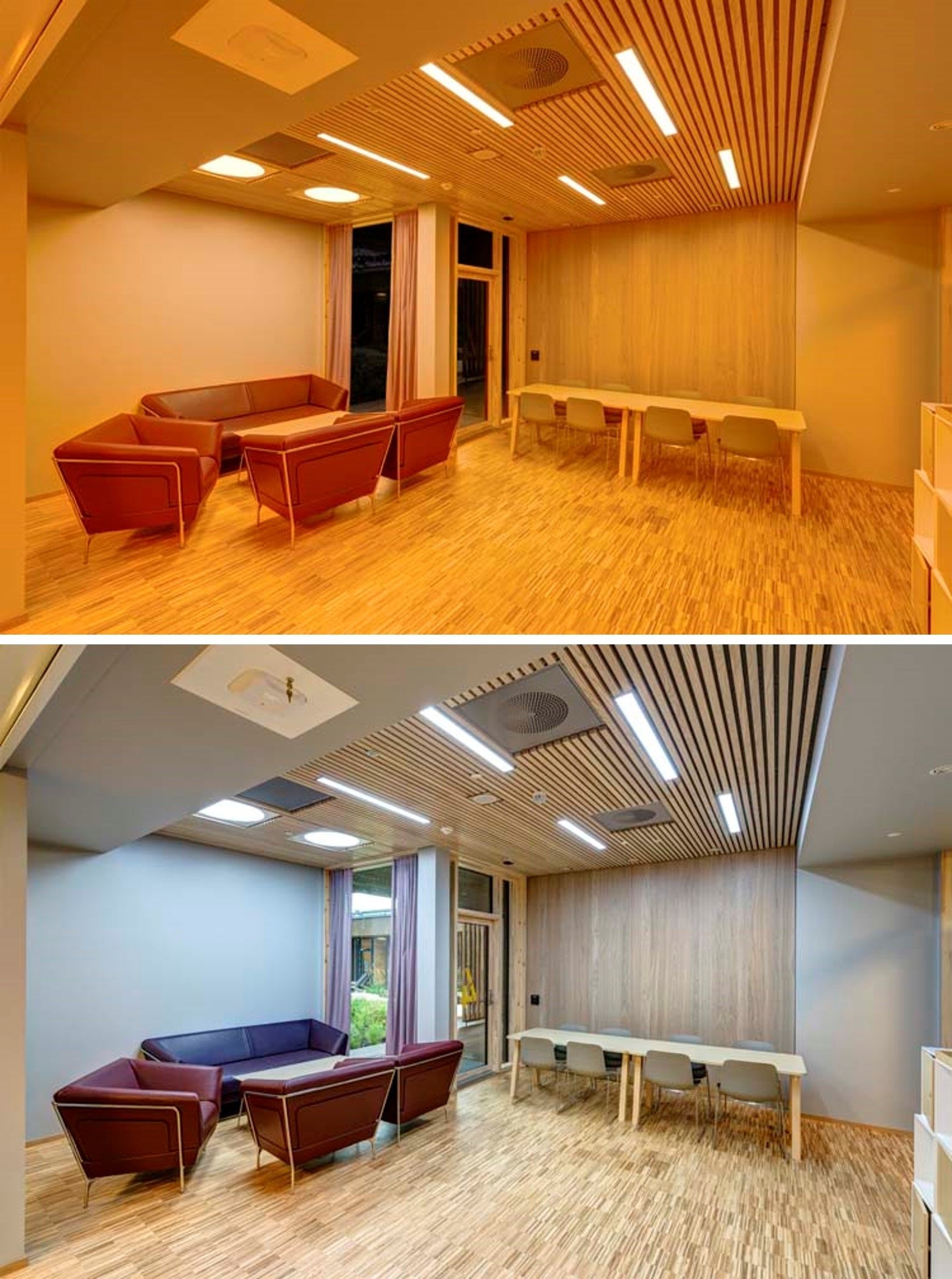In 2017, St. Olavs Hospital built a new acute psychiatric unit in Østmarka, east of Trondheim, Norway, with two identical hospital wards. Both wards have the same staffing levels, layout, and facilities, but can have different evening light environments: one with normal standard light and one with ‘blue-blocked light’ where blue wavelengths are absent.
Glamox supplied connected LED downlights, recessed ceiling lighting, suspended luminaires, wall-mounted luminaires and outdoor lighting for the building.
A recently published study in PLOS Medicine, a peer-reviewed medical journal, followed research undertaken at the ward in Østmarka. The study randomly allocated 476 patients admitted for acute inpatient psychiatric care to either the ward with a blue-blocked evening light environment or to the ward with a standard light environment. All patients received the same standard of care, had the same length of stay, and were admitted for a median length of four days.
The study gives unique insights into the benefits of optimised lighting conditions for this group of patients.
“We observed that patients admitted to the blue-blocked light environment had additional clinical improvement and displayed less aggressive behaviour during admission,” the researchers write in the study.

Norway’s national broadcaster, NRK, recently featured the study in a story on a nightly news show. When asked if the results suggest that the light adjustments have made patients healthier, one of the lead researchers replied: “Yes, our findings suggest that,” said Håvard Kallestad, researcher and senior consultant psychologist at the Department of Mental Health, Norwegian University of Science and Technology.
While the treatment did not affect the number of days that patients were admitted, it showed that the light therapy could “have clinically significant benefits without increasing side effects, without reducing patient satisfaction or requiring additional clinical staff.”
To create the necessary lighting conditions, Glamox provided connected, tuneable premium LED luminaires, equipped with an advanced control system. Doctors or nurses can manually control the light for each patient from a screen. A control system with a graphical user interface allows doctors to manage the light therapy for each patient or area in the department.
The findings of this study reinforce a growing understanding of the benefits of human-centric lighting (HCL) solutions. The study concludes, “…these benefits, coupled with the absence of side effects and the low intensity of the intervention, indicate that there is a reasonable case for broader adoption of this strategy, particularly in new units where the lighting system is being installed for the first time and is not replacing previous systems.”
Glamox has extensive experience in developing HCL technology, where lighting can also be synced to people’s natural circadian rhythms.
Although there is no ‘one-size-fits-all’ solution, we have developed lighting for use in different environments, such as healthcare institutions, schools, offices, and industry. Our lighting technology is used to help promote natural sleep patterns for patients in hospitals through to helping students concentrate in the classroom,” said Anders Bru, Concept Manager Human Centric Lighting at Glamox. “We have delivered HCL for more than 650 projects and are just scratching the surface with what this remarkable technology can do.”
,(0.5,0.5,1,1)&format=jpg)